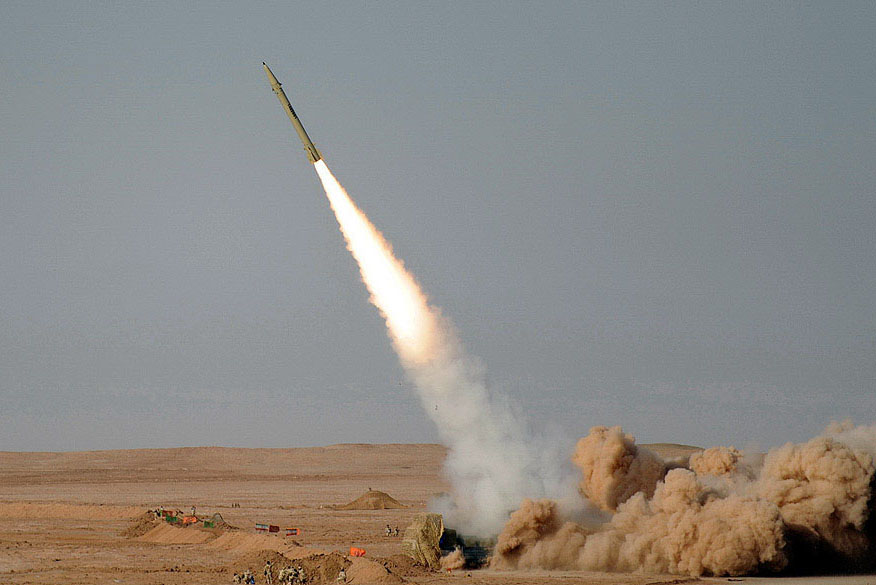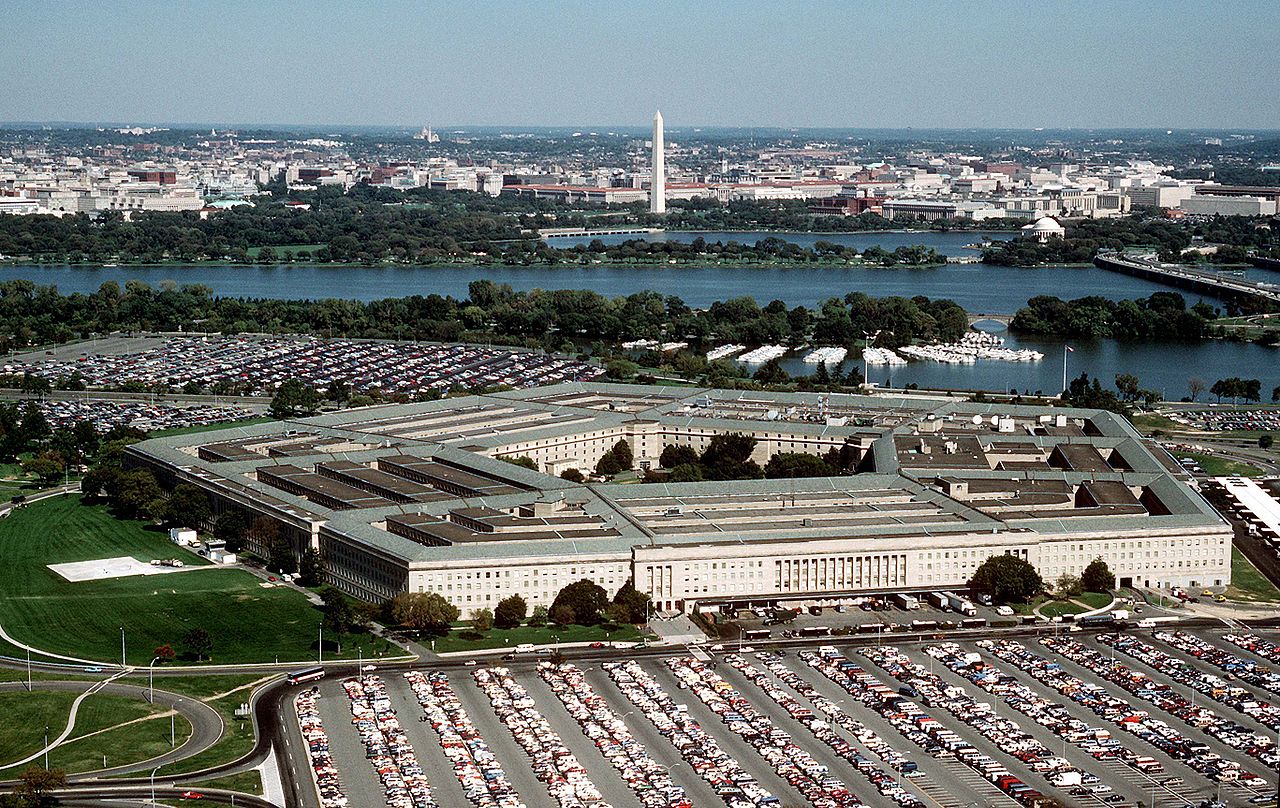Hezbollah’s Precision Threat to Israel

Published by The Lawfare Institute
in Cooperation With

Editor’s Note: Hamas has proved to be a deadly foe of Israel, but the most dangerous regional militant group is the Lebanese Hezbollah. The group possesses a massive rocket and missile arsenal as well as drones, and some of these systems are highly accurate, in contrast to most of Hezbollah’s traditional arsenal. Benjamin Allison of the University of Texas examines the threat from these precise weapons, noting the dangers they pose to Israel’s infrastructure and the difficulties Israel will have in countering them.
Daniel Byman
***
With Israel at war with Hamas, the prospect of Hezbollah involvement looms large. A particular concern is the “Party of God’s” possession of a formidable arsenal of precision guided munitions (PGMs), rockets, and drones. The former commander of the Israeli Air Force, Brig. Gen. Shachar Shohat, has dubbed PGMs “the air force of terror organizations,” while Israeli military analyst Yaakov Lappin suggests that Hezbollah’s PGMs are “Israel’s leading conventional security threat, surpassed only by Iran’s nuclear program.” Hezbollah’s various “smart weapons,” though small in number compared to its overall arsenal, pose a serious danger to Israel’s infrastructure and could even tempt Israel to launch a preemptive war.
The Hezbollah Missile and Drone Arsenal
Hezbollah has been described as “the world’s most heavily armed non-state actor,” in large part due to the tremendous number of long-range weapons it possesses. However, although Hezbollah’s arsenal is massive, only a small part of this consists of PGMs.
Despite Hezbollah’s claims to the contrary, its “precision project” seems to have been largely ineffective, not least because of the loss of Islamic Revolutionary Guard Corps’ Quds Force leader Major Gen. Qassem Soleimani in 2020 and Quds Force deputy commander Brig. Gen. Mohammad Hejazi the next year.
Some estimates put the number of Hezbollah missiles and rockets between 130,000 and 150,000, though a more conservative estimate is around 70,000, with most of those being short-range rockets and missiles. Of those, according to Israeli estimates, only several dozen—maybe around 100—are actually precision missiles. Many of the party’s missiles and rockets have come from Iran (and, to a far lesser extent, from Syria), which has played a major role in developing Hezbollah’s precision project with a goal of enabling the group to manufacture its own missiles and convert unguided rockets into PGMs.
The party purportedly has mid-range missiles like the Iranian Fateh-110 and the Syrian M-600 “Tishreen” variant, which have debatable accuracy, and may even possess longer-range Scud missiles, which would enable Hezbollah to attack Israel from sites in northern Lebanon. There have also been numerous reports from Saudi and Israeli sources that Hezbollah may possess chemical weapons, which could be mounted to rockets or missiles. The group also possesses various anti-ship missiles, potentially including the Russian Yakhont cruise missile, the most advanced anti-ship missile on Earth. Hezbollah leader Hassan Nasrallah claimed last year that “all [Israeli] land and sea targets are within the range of Hezbollah.”
Hezbollah may also have as many as 2,000 drones, many of which are of domestic manufacture; in fact, in 2022, Nasrallah advertised that the group is open to selling drones to foreign buyers. The party possesses a mixture of short- (50–100 km), medium- (200–400 km) and long-range (1,700–2,400 km) drones. The payloads of Hezbollah’s armed drones vary from precision-guided bombs to unguided rocket-propelled grenades but are generally far lighter than PGM payloads.
In a war, Hezbollah could launch an estimated 2,000 to 4,000 rockets and missiles per day, though the real rate of fire could be higher. This would be critical to its presumed strategy of using saturation tactics to overwhelm Israeli air defenses, not least because an all-out Hezbollah-Israeli conflict would likely be large in scale.
Since Hezbollah might possess only several hundred precision missiles and would face concentrated Israeli efforts to destroy its launchers, it likely would not be able to carry out an intense and extended campaign of precision missile attacks, limiting the damage it could inflict over time. While the group’s drone arsenal could enable it to launch precision attacks, the lighter and sometimes less accurate payloads carried by those drones could make it more difficult to do substantial damage to infrastructure, particularly for more hardened targets.
The Threat to Israeli Infrastructure
While Hezbollah would of course strike military targets with its drones and PGMs, it is also highly likely to hit civilian infrastructure in hopes of paralyzing Israeli state and society. Potential targets may be inferred from Hezbollah’s past activities—for example, in 2022 Hezbollah threatened the Karish gas fields with drones. Some of its public statements are also telling.
For example, in a 2019 interview, Nasrallah highlighted central Israel, noting that “a large proportion of the Israeli population resides in this area,” along with most of the Israeli government, military and air bases, oil refineries, power plants, shopping malls, seaports, airports, water desalination plants, and so on. An Iranian outlet published a piece in 2022 outlining “Israel’s target bank,” including various government buildings and nuclear and military facilities. Earlier this year, Nasrallah explicitly threatened Israel’s “civilian airports, military airports, air force bases, power plants, the water [desalination] plants, central communication centers, refineries and the [nuclear] reactor in Dimona.”
Nasrallah has consistently threatened to strike ammonia storage facilities in Israel, particularly in Haifa. Although Israel’s largest ammonia tank at the time, in the port of Haifa, was closed in 2017 due to environmental and health concerns, a large ammonia plant is currently being constructed in that city. Indeed, Haifa reportedly contains “1,500 aggregate risk areas and 800 types of dangerous chemicals.” It is, therefore, a target-rich environment, and successful strikes on chemical plants and storage facilities could be devastating.
Israel is also particularly vulnerable to attacks against its highly concentrated water desalination industry, which provides up to 85 percent of the country’s potable water. The vast majority of desalination occurs at five plants, though there are plans to raise that number to seven. Missile or drone strikes against desalination plants could drastically worsen Israel’s water scarcity problems and, in a worst-case scenario, could create cascading effects on its water infrastructure and agriculture, generating a health crisis.
Another concern is that Israeli energy sources could be targeted—particularly petroleum imports, power stations, and natural gas infrastructure. Like most Israeli assets, the energy industry is highly concentrated along the coastline. Attacking a handful of power stations could put the country’s electric grid under severe stress. For instance, neutralizing just the Rutenberg and Orot Rabin power plants would strip the country of about one-third of its electricity production.
Relatedly, strikes on Israeli shipping lanes and seaports could sorely tax the Israeli economy. Most of the crude oil that Israel imports passes through the port of Ashkelon in the south, with the overwhelming majority of it coming—until recently—from Kurdistan. Israel has only two oil refineries, one in the north and one in the south. A successful attack on the port of Ashkelon or the “Bazan” or “Paz” refineries would likely devastate the country, which, despite decreasing its oil consumption drastically in the past 40 years, still relies on oil for more than 40 percent of its energy consumption.
Israeli air traffic is centralized as well. Almost all of it passes through Ben Gurion Airport, which typically, in non-pandemic years, sees more than 24 million travelers per year, whereas the next largest airport will, at most, be able to handle 2 million—though it has thus far seen far less traffic than that.
A more difficult transportation target for Hezbollah would be the Israeli highway system, which features a tremendously high concentration of high-traffic highways in central Israel. Several well-placed strikes on just a few critical highways, particularly at major interchanges, could drastically slow, if not halt, Israeli highway transportation. For example, in late 2021, the crucial Route 1 between Jerusalem and Tel Aviv was nearly shut down for hours due to a truck colliding with an overpass; a precision missile or drone strike could have similar, if not greater, effects. A successful bridge or tunnel attack, while difficult to pull off, would have substantial cascading effects across numerous sectors.
Any and all of these targets could be attacked by a combination of Hezbollah’s PGMs, rockets, and drones. In order to overwhelm Israeli defenses, the party would most likely use saturation tactics, making use of its massive rocket arsenal to distract Israeli air defense systems. Using “smart” weapons to strike those would give Hezbollah the advantage of speed and precision—the latter is sorely lacking in its unguided rockets, which are far more useful for psychological, rather than kinetic, aims. Due to the seemingly limited number of PGMs in the group’s possession, it would likely focus its PGMs on more vulnerable targets like desalination plants, ammonia storage facilities, and the energy sector, along with a few choice strikes on transportation targets to hamper the Israeli response.
Israeli Countermeasures
Israel has some protections against such attacks by Hezbollah. Of course, the most famous part of Israel’s air defense is the Iron Dome system, which intercepts short-range projectiles, but that is just one component. Medium- and long-range rockets and missiles are intercepted by the David’s Sling and Arrow systems, respectively. Furthermore, at sea, the Israeli Navy has been mounting C-Dome air defense systems on ships to protect them from aerial attacks.
If Hezbollah attacks with its precision arsenal, Israel’s entire air defense apparatus will be tested like never before. While it was already assumed by many experts that the most effective way to get past Israeli air defenses would be to overwhelm the system through saturation strikes, Hamas’s assault on Oct. 7 proved this to be an effective tactic.
Because of these potential vulnerabilities, the Israeli government may opt to preemptively strike Hezbollah rocket and missile sites. It is highly unlikely, however, that Israel could entirely strip Hezbollah of counterstrike capabilities, not least because Hezbollah appears to have significantly improved its air defenses, complicating Israeli Air Force incursions into Lebanese airspace in recent years. The recent unveiling of the group’s Tharollah (AS) anti-tank missile system suggests that Hezbollah is seeking to improve its defenses against Israeli ground campaigns as well. Hezbollah’s air defenses may hamper an attempt by Israel to decimate Hezbollah’s precision capabilities, as would the dispersion of its rocket and missile sites throughout the country, largely depending on their range—the longer the range, the farther north they can be stored.
It is therefore highly likely that, in order to rid itself of the Hezbollah precision threat, Israel would have to launch not only a concerted air offensive against Lebanon, but also a ground invasion in order to fully eradicate launch sites and manufacturing facilities. Whether started by Israel or Hezbollah, such a conflict could spread to include the United States, which has been working to signal to Iran and Hezbollah not to become involved.
If Hezbollah and Israel go to war, Hezbollah would likely target not only Israeli military assets but also civilian infrastructure, in an attempt to paralyze the country, putting its population under duress and drastically reducing the state’s ability to respond. If successful—and that is a big “if,” since one cannot be sure of Hezbollah’s exact capabilities or how Israeli defenses would hold up—this could potentially trigger energy, transportation, and health crises on an enormous scale, possibly threatening the very survival of the Israeli state, and the expansion of the conflict to include other states. Not only would the population of Israel suffer, but the Lebanese people would also see their already-dismal situation deteriorate even further, as Israel has promised that any war with Hezbollah would be total.





